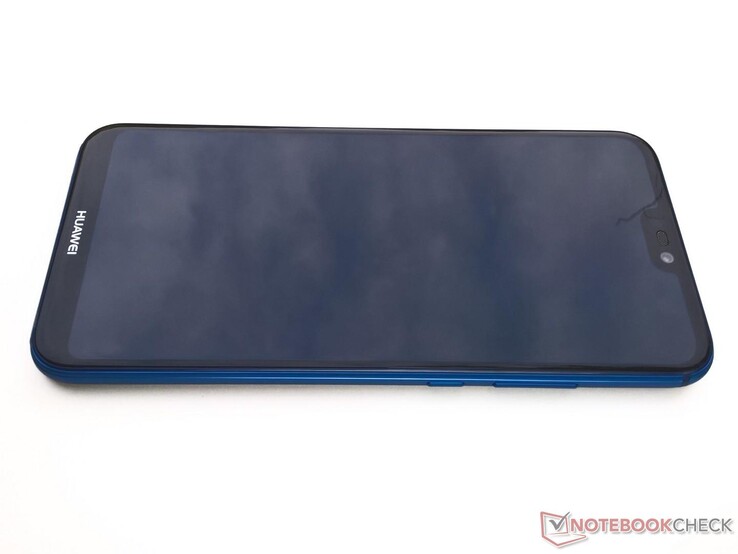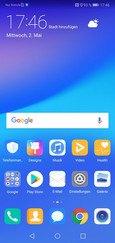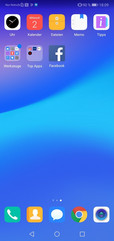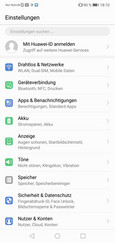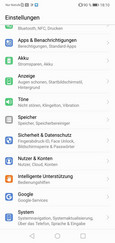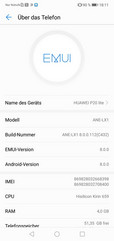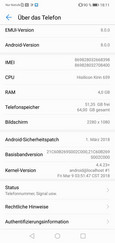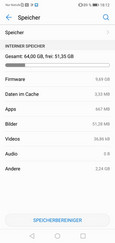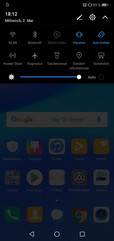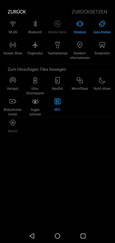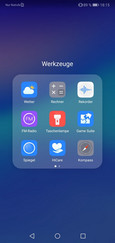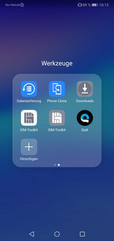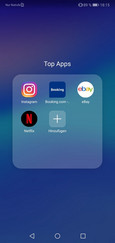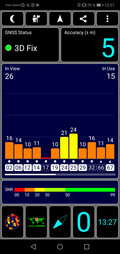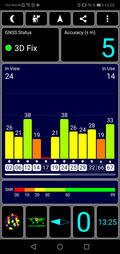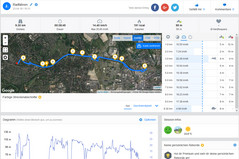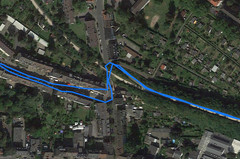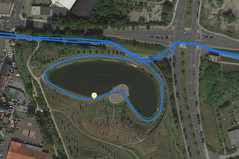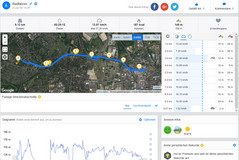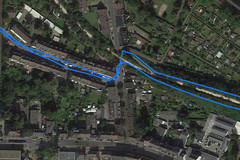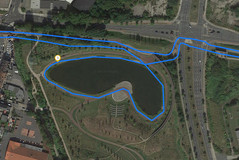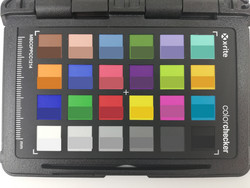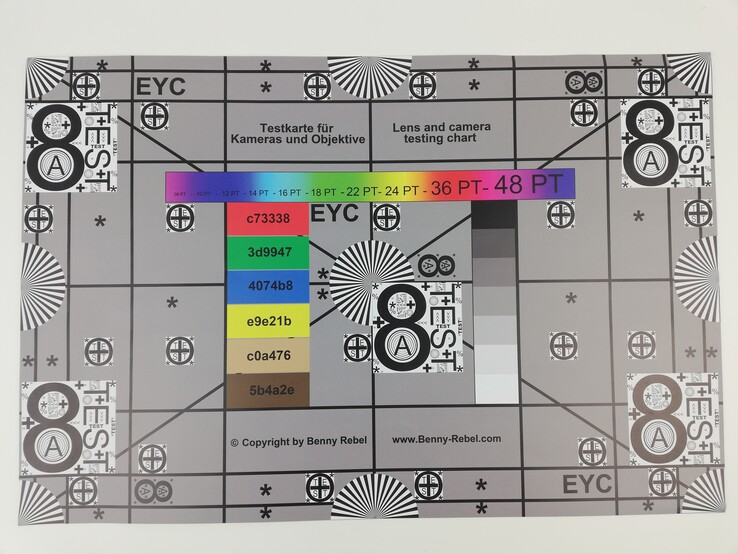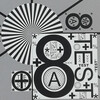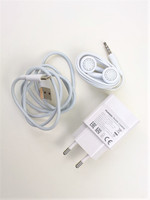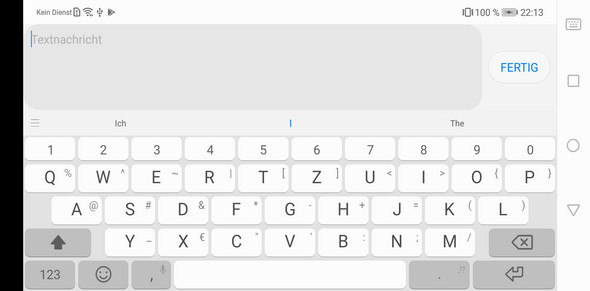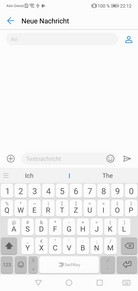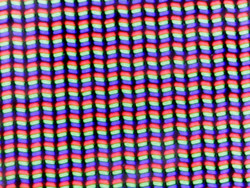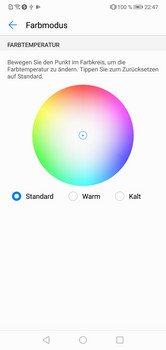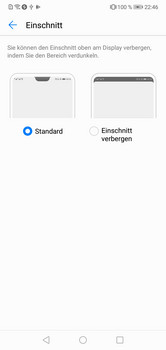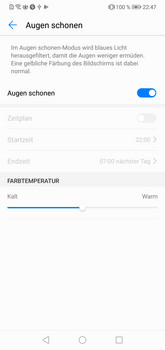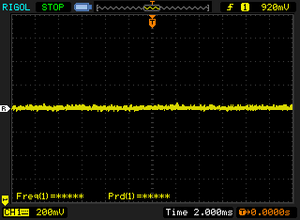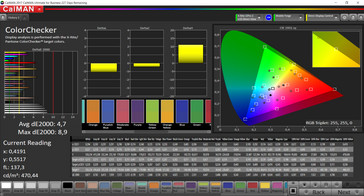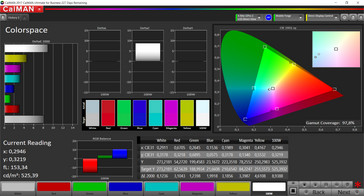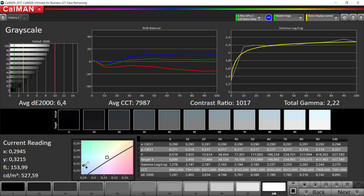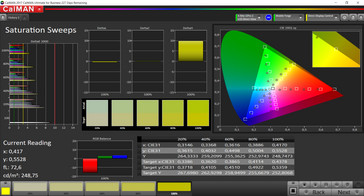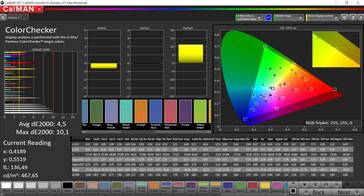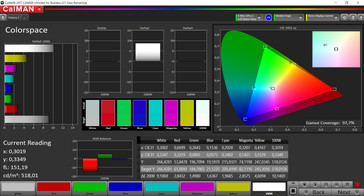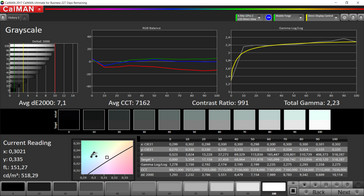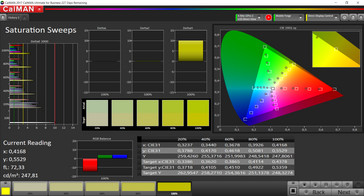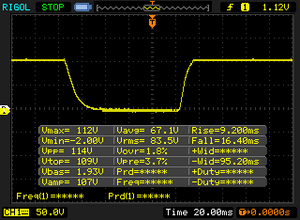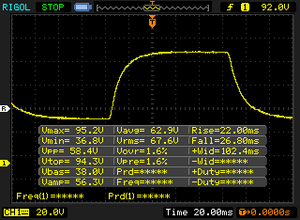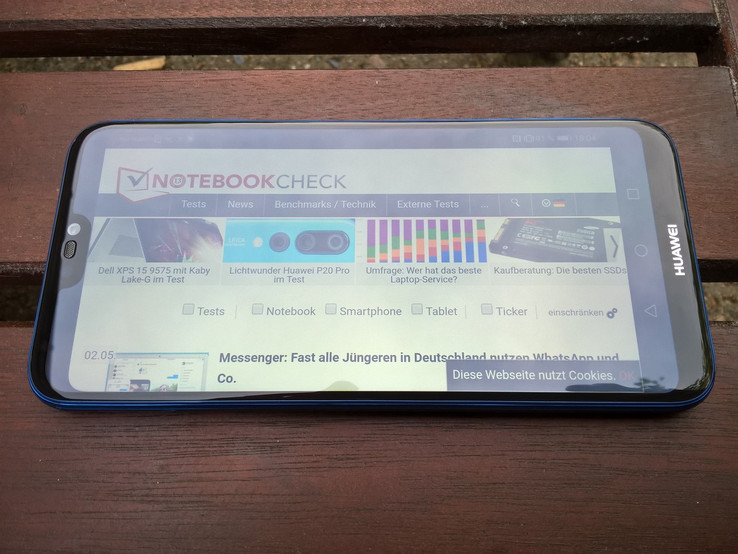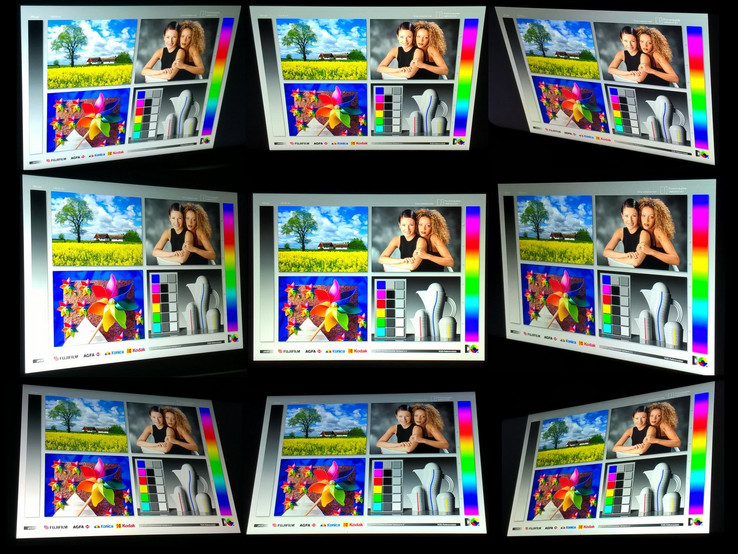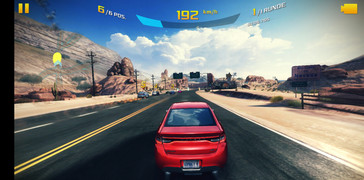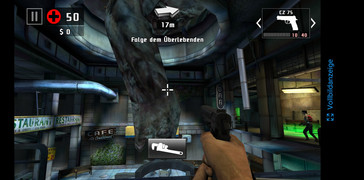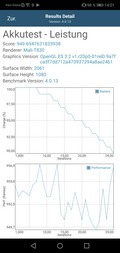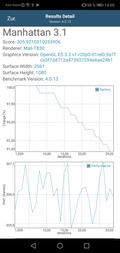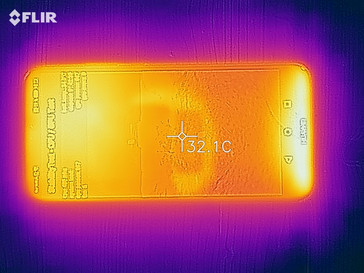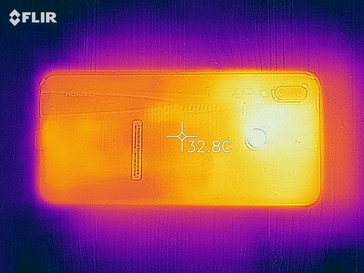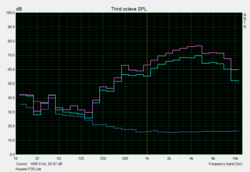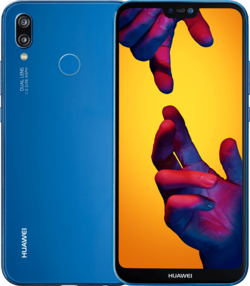Huawei P20 Lite Smartphone Review
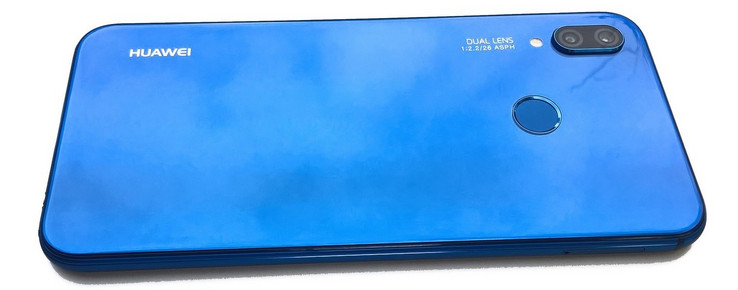
Each year, Huawei updates its P series devices. The Chinese manufacturer has always offered a lower priced model with weaker hardware next to its high-performance devices. Following the popular smartphones P9 Lite and P10 Lite, the P20 Lite now joins the list of Huawei P models. Equipped with the HiSilicon Kirin 659, it still possesses an up-to-date eight-core SoC and as opposed to previous P Lite models, the P20 Lite now comes with a dual-camera. While it is not able to match the quality of the 40 MP triple-cam of the flagship model P20 Pro, its 16 MP cameras on the front and back of the device promise good snapshots.
At about 370 Euros (~$435), the P20 Lite faces a relatively large number of competition. Not only many mid-range smartphones, but also high-end devices from the last couple of years are available for the asking price. In order to make the comparison as meaningful as possible, we compare our test device to smartphones with similar performance. This includes the HTC U11 Life and Honor's 7X as well as Sony's Xperia XA2 and the Samsung Galaxy A5 from 2017. This list could easily be expanded, but has been kept short for the sake of clarity. In order to see how much of a performance increase owners of the predecessor can expect, we have also included the P10 Lite in the comparison.
Case - P20 Lite's design mimics the design of larger models
As opposed to the two larger P20 models, the P20 Lite does not have a button on the front side. The speaker on top of the front side is the only discontinuity in the otherwise even surface. Huawei uses the available space for the display, presenting users of the P20 Lite with an almost borderless design. The notch on the top contains the 16 MP selfie camera, a speaker and the light sensor. Around the edges, the material changes from glass to metal. While the transitions are rounded off, you can feel them distinctly. The gap is hereby very small and even, causing the device to still feel high-quality.
Volume control and the power button are to the right. All the buttons are held firmly in place and have a comfortable pressure point. Unlike the P20 Pro, the P20 Lite comes without colorful accents on the buttons. SIM and microSD card slots are to the left, blending in seamlessly with the case. The design of the P20 Lite is evidently inspired by that of the big flagship models. However the position of the fingerprint sensor is a fundamental difference. It is situated in the middle on the back. The flash and the dual-camera were placed to the left of it. The dual-camera protrudes about 1.5 mm (~0.06 in), following a trend that many of the currently available smartphones set.
Features - Huawei P20 Lite with moderate features
The P20 Lite has the HiSilicon Kirin 659 at its disposal, a powerful mid-range SoC. In conjunction with the 4 GB of RAM and 64 GB of internal flash memory, it provides a solid basic configuration for a smooth system. Even though the performance pales in comparison to that of the P20's and P20 Pro's Kirin 970, the P20 Lite is able to compete with other mid-range smartphones. Potential buyers can play games as well. While the integrated Mali-T830-MP2-GPU is not able to run the latest 3D Android titles on high settings, it has enough performance for games from 2016.
Another aspect in which it differs from top models is by no means a drawback. The P20 Lite has a 3.5 mm jack, allowing you to connect normal headsets and headphones without the hassle of an adapter. The USB Type-C port only supports the 2.0 standard, but it does support USB OTG, tethering, MTP, PTP and is, of course, used for charging purposes. The NFC contact area is above the fingerprint sensor on the back and Bluetooth 4.2 is also available.
Software - Huawei EMUI 8.0 plus Android Oreo
The P20 Lite comes with Android 8.0 and Huawei's EMUI interface (also version 8.0) ex-factory. The security patches are from May 1st 2018. Unlike the two high-end P20 models, the P20 Lite cannot be connected to an external monitor in desktop mode.
Huawei restrain themselves in terms of preinstalled apps, only providing a few third party programs, which can be uninstalled easily. An external SD card cannot be formatted into internal storage, but it can be used as the main directory for apps, pictures and videos. If the P20 Lite is used by multiple users, that can be set up in the settings menu.
Communication and GPS - P20 Lite's geolocation only with mediocre results
The P20 Lite offers various ways to connect with the outside world. The networking unit of the Huawei smartphone covers all the necessary bands to enable a good connection at an appropriate signal strength. LTE band 20, which is still important, is supported as well. If an SD card is not needed, a second SIM card can be used in its place enabling you to use the device with multiple carriers and mobile communications networks.
Since the smartphone supports the Wi-Fi ac standard, it also supports the fast 5 GHz band, but is only able to match the transfer rates of its predecessor P10 Lite. Competing devices such as the Sony Xperia XA2 reach far higher speeds. We did not notice any cell reception problems and the Wi-Fi range can be described normal as well. Additionally, the P20 is equipped with Bluetooth 4.2 and an NFC sensor.
| Networking | |
| iperf3 transmit AX12 | |
| Sony Xperia XA2 | |
| HTC U11 Life | |
| Huawei P20 Lite | |
| Huawei P10 Lite | |
| Samsung Galaxy A5 2017 | |
| iperf3 receive AX12 | |
| Sony Xperia XA2 | |
| Huawei P10 Lite | |
| HTC U11 Life | |
| Samsung Galaxy A5 2017 | |
| Huawei P20 Lite | |
The Huawei P20 Lite very quickly establishes a usable satellite connection outdoors with the app "GPS-Test" and does not lose it when entering a building. It is even able to match its outdoors accuracy when next to a window. Speaking of the GPS, an accuracy of within 5 meters (~16 ft) is not terribly precise, but easily enough for simple navigation tasks.
We took the phone along on a bike ride on our test track and compare the GPS of the P20 Lite with our reference device Garmin Edge 500. The recorded route shows that the geolocation tolerance of 5 meters (~16 ft) is visible over the course of the track. On individual parts of the track, the measured location differs a considerable amount from the actual location, whereas these deviations can be seen continuously through turns and straight parts of the route. Thus, the P20 Lite is not suitable for applications where precise locating is needed.
Telephony: Huawei smartphone shines with great call quality
The Huawei P20 Lite's telephony is solid. The conversation quality is pleasant. Hereby it does not matter whether the Huawei smartphone is held to your ear or used in hands-free mode. The Speaker reproduces speech very clearly and the volume is sufficiently high to drown out other noises. Calls can be made via VoLTE and VoWiFi, if supported by your carrier.
Cameras: Two are better than one, P20 Lite with 16 MP on either side
Huawei has installed two 16 MP cameras in the P20 Lite, one on the front for selfies and one on the back for pictures of your surroundings. The latter of the two additionally has a 2 MP sensor for depth information. Next to the dual-cam the characters "1:2.2/26 ASPH" describe the technical specifications of the camera. They are limited to a focal length of 26 mm and an aperture of f/2.2. The abbreviation "ASPH" describes the aspherical curvature of the lens, which is supposed to prevent image defects. Equipped with these features, the P20 Lite is able to take pictures with a maximum resolution of 4608x3456 pixels with an aspect ratio of 4:3. 1080p video recording is also possible.
Both the photo and the video settings can be adjusted through different options. Both modes allow you to use and reconfigure the volume control. Multiple filters and a professional mode barely leave anything to be desired. The professional video mode enables you to adjust the automatic color balance, matrix metering and exposure compensation. The corresponding mode for pictures allows you to manipulate shutter speed and ISO values and lets you save photos in RAW format.
But even without these settings, the camera of the Huawei smartphone produces good results. As usual, good lighting is crucial for the quality of the picture. Daylight facilitates good snapshots that only lack sharpness in detail. All in all the pictures are always slightly too bright and seem pale. However the transitions from bright to dark areas stay clearly defined. Bad lighting conditions make sharp pictures almost impossible to achieve. Transitions fade into each other and details are lost in a generic blur.
The picture of our ColorChecker passport confirms our initial impression. Nearly all color fields are too bright, a small exception to this are dark gray tones. Under controlled lighting conditions, the picture of the test chart shows that the camera of the Huawei P20 Lite is able to produce detailed depictions all the way to the edges when the circumstances are ideal. Here, it is mainly the bottom corners that are reproduced too brightly, although details and fine lines stay clearly visible.
Accessories and Warranty - P20 Lite with Headset
In addition to a USB quick charger and a suitable USB Type-C-to-Type-A cable, Huawei includes a headset with 3.5 mm plug. With it, conversations can be held in an acceptable quality and on top of that, calls can be accepted with a button on the cable. Huawei does not offer any accessories specifically for the P20 Lite in their own shop, but various online retailers carry numerous accessories.
Huawei offers buyers of the P20 Lite 24 months warranty. Please see our Guarantees, Return policies and Warranties FAQ for country-specific information.
Input Devices & Handling: Direct Inputs with the Huawei P20 Lite
Huawei uses a preinstalled Swype keyboard for virtual inputs. Here, the keyboard area is comfortably accessible in portrait mode. In landscape mode, people with short thumbs will already struggle to reach the middle keys. Various keyboard layouts are available in the settings menu though, which makes it possible to type with the hand that is holding the device. The standard Android keyboard can also be selected in the menu if desired.
The capacitive display of the P20 Lite is capable of recognizing multi-touch inputs and reacts reliably to inputs all the way to the edges. Single-handed use, gestures and voice control can be configured in the respective menu. Additionally, a fingerprint sensor resides on the back of the device. Once located, the device unlocks in less than a second. As an alternative, FaceID can be set up. Device localization and a fingerprint protected SafeSpace protect the device in case of theft.
Display - Huawei P20 Lite's screen sharp with good colors
The display with an aspect ratio of 18.7:9 is dominated by the notch at the top, the latter of which can be hidden through the menu. Although the IPS panel with its resolution of 2280x1080 pixels is not exceptional, it does have very vibrant colors and it depicts images with amazing sharpness. Aside from a mode for reducing eye strain where the color temperature can be changed with a slider, users can freely change the coloring of the display.
The brightness is high enough for the displayed content to be recognizable in bright sunlight. Even so, the measured values only indicate an average luminance. Similarly, the P20 Lite is competitive in its class; competing devices do not reach higher cd/m2 values either.
| |||||||||||||||||||||||||
Brightness Distribution: 89 %
Center on Battery: 528 cd/m²
Contrast: 1035:1 (Black: 0.51 cd/m²)
ΔE ColorChecker Calman: 4.7 | ∀{0.5-29.43 Ø4.78}
ΔE Greyscale Calman: 6.4 | ∀{0.09-98 Ø5}
97.8% sRGB (Calman 2D)
Gamma: 2.22
CCT: 7987 K
| Huawei P20 Lite IPS, 2280x1080, 5.8" | HTC U11 Life SLCD, 1920x1080, 5.2" | Huawei P10 Lite IPS, 1920x1080, 5.2" | Samsung Galaxy A5 2017 Super AMOLED, 1920x1080, 5.2" | Sony Xperia XA2 IPS, 1920x1080, 5.2" | |
|---|---|---|---|---|---|
| Screen | 8% | 8% | 37% | -3% | |
| Brightness middle (cd/m²) | 528 | 545 3% | 507 -4% | 539 2% | 513 -3% |
| Brightness (cd/m²) | 525 | 526 0% | 509 -3% | 542 3% | 506 -4% |
| Brightness Distribution (%) | 89 | 87 -2% | 95 7% | 93 4% | 93 4% |
| Black Level * (cd/m²) | 0.51 | 0.42 18% | 0.36 29% | 0.42 18% | |
| Contrast (:1) | 1035 | 1298 25% | 1408 36% | 1221 18% | |
| Colorchecker dE 2000 * | 4.7 | 4.9 -4% | 5.1 -9% | 1.6 66% | 5 -6% |
| Colorchecker dE 2000 max. * | 8.9 | 8.5 4% | 9 -1% | 2.6 71% | 11.4 -28% |
| Greyscale dE 2000 * | 6.4 | 5.4 16% | 6.1 5% | 1.5 77% | 7.8 -22% |
| Gamma | 2.22 99% | 2.31 95% | 2.28 96% | 2.28 96% | 2.2 100% |
| CCT | 7987 81% | 7610 85% | 8143 80% | 6422 101% | 7964 82% |
* ... smaller is better
Screen Flickering / PWM (Pulse-Width Modulation)
| Screen flickering / PWM not detected | |||
In comparison: 53 % of all tested devices do not use PWM to dim the display. If PWM was detected, an average of 8101 (minimum: 5 - maximum: 343500) Hz was measured. | |||
As mentioned earlier, the Huawei P20 Lite's display has vibrant colors and sharp contours. Black tones look good, but the heightened black value causes dark multimedia content to appear slightly grayish. While this barely affects pictures or video, hiding the notch uncovers a noticeable difference between the black bars on the display and on the borders. Most competing devices achieve better results in this respect.
Our CalMAN measurements show the P20 Lite's increased blue portion when using the "Standard" color temperature setting. This can be somewhat compensated with the preconfigured profile "Color temperature: Warm". Both settings are significantly lacking red portion however, that stays low with both profiles.
Display Response Times
| ↔ Response Time Black to White | ||
|---|---|---|
| ms ... rise ↗ and fall ↘ combined | ↗ 9.2 ms rise | |
| ↘ 16.4 ms fall | ||
| The screen shows very fast response rates in our tests and should be very well suited for fast-paced gaming. In comparison, all tested devices range from 0.1 (minimum) to 240 (maximum) ms. » 0 % of all devices are better. This means that the measured response time is better than the average of all tested devices (20.2 ms). | ||
| ↔ Response Time 50% Grey to 80% Grey | ||
| ms ... rise ↗ and fall ↘ combined | ↗ 22 ms rise | |
| ↘ 26.8 ms fall | ||
| The screen shows very fast response rates in our tests and should be very well suited for fast-paced gaming. In comparison, all tested devices range from 0.165 (minimum) to 636 (maximum) ms. » 0 % of all devices are better. This means that the measured response time is better than the average of all tested devices (31.6 ms). | ||
The Huawei P20 Lite is great for outdoor use. Reflections of objects can be easily pushed out of view by slightly changing the angle at which you are holding the phone, which makes screen contents visible even in direct sunlight. However, this might put strain on the eyes if done for a prolonged period of time and should be avoided.
Performance - P20 Lite offers moderate performance
Inside the Huawei P20 Lite, a HiSilicon-Kirin-659-SoC powers all applications. This mid-range SoC, which entered the market in March of 2017, has been used in numerous smartphones since. It has 8 cores that can run at up to 2.36Hz and aside from the LPDDR3 memory controller and the Cat.13 LTE modem also comes with an ARM Mali-T830 MP2 graphics unit. In conjunction with the 4 GBs of RAM it ensures that modern apps can be run and that the system runs smoothly. However, complex 3D applications such as graphically demanding games can push the SoC to its limits. Android gaming blockbusters from 2015 and 2016 should run smoothly though.
In our benchmark tests, the P20 Lite is able to convince with good system performance, but does not manage to outperform comparable competitors. Sony's Xperia XA2 and the HTC U11 are always ahead by a small margin. The two competitors that are equipped with Qualcomm's Snapdragon-630 SoC especially outperform the HiSilicon Kirin 659 in terms of graphics performance. Depending on the test, there is very little difference compared to its predecessor Huawei P10 Lite. While it performs up to 20 percent better in some benchmarks, the P20 Lite's results, for example, do not manage to exceed those of the P10 Lite in PCMark's Work-Performance-Score.
| AnTuTu v6 - Total Score (sort by value) | |
| Huawei P20 Lite | |
| HTC U11 Life | |
| Huawei P10 Lite | |
| Samsung Galaxy A5 2017 | |
| Sony Xperia XA2 | |
| Average HiSilicon Kirin 659 (62810 - 68232, n=8) | |
| AnTuTu v7 - Total Score (sort by value) | |
| Huawei P20 Lite | |
| Sony Xperia XA2 | |
| Average HiSilicon Kirin 659 (81992 - 89639, n=6) | |
| PCMark for Android | |
| Work performance score (sort by value) | |
| Huawei P20 Lite | |
| HTC U11 Life | |
| Huawei P10 Lite | |
| Samsung Galaxy A5 2017 | |
| Sony Xperia XA2 | |
| Average HiSilicon Kirin 659 (5704 - 6252, n=7) | |
| Work 2.0 performance score (sort by value) | |
| Huawei P20 Lite | |
| HTC U11 Life | |
| Huawei P10 Lite | |
| Samsung Galaxy A5 2017 | |
| Sony Xperia XA2 | |
| Average HiSilicon Kirin 659 (4615 - 4911, n=8) | |
| GFXBench 3.1 | |
| on screen Manhattan ES 3.1 Onscreen (sort by value) | |
| Huawei P20 Lite | |
| HTC U11 Life | |
| Huawei P10 Lite | |
| Samsung Galaxy A5 2017 | |
| Sony Xperia XA2 | |
| Average HiSilicon Kirin 659 (4.5 - 5.6, n=8) | |
| Average of class Smartphone (11 - 166, n=157, last 2 years) | |
| 1920x1080 Manhattan ES 3.1 Offscreen (sort by value) | |
| Huawei P20 Lite | |
| HTC U11 Life | |
| Huawei P10 Lite | |
| Samsung Galaxy A5 2017 | |
| Sony Xperia XA2 | |
| Average HiSilicon Kirin 659 (3.2 - 5.4, n=8) | |
| Average of class Smartphone (8.4 - 413, n=156, last 2 years) | |
| Basemark ES 3.1 / Metal - offscreen Overall Score (sort by value) | |
| Samsung Galaxy A5 2017 | |
| Average HiSilicon Kirin 659 (n=1) | |
| Average of class Smartphone (205 - 7731, n=35, last 2 years) | |
The browser benchmark of the P20 Lite shows mixed results. Whereas the Huawei smartphone leaves its competitors behind in the Mozilla Kraken 1.1 benchmark, the device only sits in one of the last places in the remaining tests. Subjectively, browsing with the preinstalled Chrome 63 feels fast. Pages are displayed quickly and there are no loading times that can be attributed to something other than the internet connection.
| JetStream 1.1 - Total Score | |
| Samsung Galaxy A5 2017 (Samsung Browser (Chrome 44)) | |
| Huawei P10 Lite (Chrome 55.0.2883.91) | |
| HTC U11 Life (Chrome 63) | |
| Average HiSilicon Kirin 659 (23.4 - 31.3, n=8) | |
| Sony Xperia XA2 (Chrome 65.0.3325.109) | |
| Huawei P20 Lite (Chrome 63) | |
| Octane V2 - Total Score | |
| Average of class Smartphone (2228 - 121337, n=197, last 2 years) | |
| Samsung Galaxy A5 2017 (Samsung Browser (Chrome 44)) | |
| Average HiSilicon Kirin 659 (4191 - 5471, n=8) | |
| HTC U11 Life (Chrome 63) | |
| Sony Xperia XA2 (Chrome 65.0.3325.109) | |
| Huawei P10 Lite (Chrome 55.0.2883.91) | |
| Huawei P20 Lite | |
| Mozilla Kraken 1.1 - Total | |
| Huawei P20 Lite (Chrome 63) | |
| Sony Xperia XA2 (Chrome 65.0.3325.109) | |
| HTC U11 Life (Chrome 63) | |
| Average HiSilicon Kirin 659 (8684 - 10788, n=8) | |
| Huawei P10 Lite (Chrome 55.0.2883.91) | |
| Samsung Galaxy A5 2017 (Samsung Browser (Chrome 44)) | |
| Average of class Smartphone (257 - 28190, n=154, last 2 years) | |
| WebXPRT 2015 - Overall | |
| Sony Xperia XA2 (Chrome 65.0.3325.109) | |
| Average HiSilicon Kirin 659 (86 - 120, n=8) | |
| HTC U11 Life (Chrome 63) | |
| Samsung Galaxy A5 2017 (Samsung Browser (Chrome 44)) | |
| Huawei P20 Lite (Chrome 63) | |
| Huawei P10 Lite (Chrome 55.0.2883.91) | |
* ... smaller is better
Huawei equips the P20 Lite with 64 GB of internal flash memory. This is one of the faster memories we have tested, leaving behind the benchmark results of the other devices in the comparison. The microSD card reader also performs well with our reference memory card Toshiba Exceria Pro M501 and sits slightly above the competition’s average.
| Huawei P20 Lite | HTC U11 Life | Huawei P10 Lite | Samsung Galaxy A5 2017 | Sony Xperia XA2 | Average 64 GB eMMC Flash | Average of class Smartphone | |
|---|---|---|---|---|---|---|---|
| AndroBench 3-5 | -18% | -26% | -44% | -23% | -11% | 596% | |
| Sequential Read 256KB (MB/s) | 293.9 | 268 -9% | 264.3 -10% | 182 -38% | 271.5 -8% | 277 ? -6% | 2228 ? 658% |
| Sequential Write 256KB (MB/s) | 198.3 | 120 -39% | 129.2 -35% | 77.1 -61% | 127.4 -36% | 178.4 ? -10% | 1852 ? 834% |
| Random Read 4KB (MB/s) | 48.19 | 39.3 -18% | 72.5 50% | 22.41 -53% | 43.07 -11% | 60.7 ? 26% | 296 ? 514% |
| Random Write 4KB (MB/s) | 71.1 | 50.2 -29% | 19.36 -73% | 12.13 -83% | 13.82 -81% | 33.8 ? -52% | 339 ? 377% |
| Sequential Read 256KB SDCard (MB/s) | 83.5 ? | 82.8 ? -1% | 53.4 ? -36% | 73.7 ? -12% | 86 ? 3% | 77.4 ? -7% | |
| Sequential Write 256KB SDCard (MB/s) | 69 ? | 59.8 ? -13% | 32.7 ? -53% | 56 ? -19% | 64.8 ? -6% | 58.3 ? -16% |
Gaming - Just basic smartphone gaming
The P20 Lite's gaming performance mainly depends on the inbuilt ARM Mali-T830 MP2 graphics unit. It offers solid performance and is able to run complex 3D titles from 2015 and 2016 smoothly. To that effect, the Huawei smartphone demonstrates good performance in our test. The games we tested all ran smoothly and without stutter. The gyroscope and the accelerometer react well to movement, although their response could be a tad more direct. Touch inputs on the display work well and feel direct and smooth, even over a prolonged period of time.
| Dead Trigger 2 | |||
| Settings | Value | ||
| high | 30 fps | ||
| Asphalt 8: Airborne | |||
| Settings | Value | ||
| high | 29 fps | ||
| very low | 29 fps | ||
Emissions - P20 Lite gets lukewarm
Temperature
Surface temperatures of the Huawei P20 Lite stay moderate, even under load. At just under 37 °C (~99 °F) you will definitely be able to feel the rise in temperature, but the device does not get hot and can be held in hand at any time. The device reaches a similar temperature while charging. With the GFXBench battery test, we assess the P20 Lite's ability to perform under load. The results show that the performance is being maintained with just minimal dips. The more demanding Manhattan test paints a similar picture. The FPS only varies by about +/- 1 FPS per cycle.
(+) The maximum temperature on the upper side is 36.2 °C / 97 F, compared to the average of 35.2 °C / 95 F, ranging from 21.9 to 247 °C for the class Smartphone.
(+) The bottom heats up to a maximum of 36.8 °C / 98 F, compared to the average of 34 °C / 93 F
(+) In idle usage, the average temperature for the upper side is 27 °C / 81 F, compared to the device average of 32.9 °C / 91 F.
Speakers
The speakers of the P20 Lite reproduce speech very loudly and clearly. Media containing music sounds weak and lacks sound stage. Bass heavy audio playback in particular suffers from the missing depths. The included headphones are not an alternative here either, since they also completely ignore bass and sound quality has been optimized for speech. The available 3.5 mm jack allows for a large selection of external audio playback devices however, and firmly connects with the respective plugs.
In comparison with its class it should be noted that comparable competitors show a similarly unbalanced audio performance.
Huawei P20 Lite audio analysis
(+) | speakers can play relatively loud (84.1 dB)
Bass 100 - 315 Hz
(-) | nearly no bass - on average 25% lower than median
(±) | linearity of bass is average (9.4% delta to prev. frequency)
Mids 400 - 2000 Hz
(+) | balanced mids - only 4.4% away from median
(±) | linearity of mids is average (8.7% delta to prev. frequency)
Highs 2 - 16 kHz
(±) | higher highs - on average 10.5% higher than median
(+) | highs are linear (3.4% delta to prev. frequency)
Overall 100 - 16.000 Hz
(±) | linearity of overall sound is average (25.5% difference to median)
Compared to same class
» 63% of all tested devices in this class were better, 7% similar, 30% worse
» The best had a delta of 11%, average was 35%, worst was 134%
Compared to all devices tested
» 78% of all tested devices were better, 5% similar, 18% worse
» The best had a delta of 4%, average was 24%, worst was 134%
Sony Xperia XA2 audio analysis
(+) | speakers can play relatively loud (85.6 dB)
Bass 100 - 315 Hz
(-) | nearly no bass - on average 28% lower than median
(±) | linearity of bass is average (11% delta to prev. frequency)
Mids 400 - 2000 Hz
(±) | reduced mids - on average 5.5% lower than median
(+) | mids are linear (5.6% delta to prev. frequency)
Highs 2 - 16 kHz
(±) | higher highs - on average 7.6% higher than median
(+) | highs are linear (2.2% delta to prev. frequency)
Overall 100 - 16.000 Hz
(±) | linearity of overall sound is average (23.6% difference to median)
Compared to same class
» 53% of all tested devices in this class were better, 8% similar, 39% worse
» The best had a delta of 11%, average was 35%, worst was 134%
Compared to all devices tested
» 70% of all tested devices were better, 6% similar, 24% worse
» The best had a delta of 4%, average was 24%, worst was 134%
HTC U11 Life audio analysis
(+) | speakers can play relatively loud (90.2 dB)
Bass 100 - 315 Hz
(-) | nearly no bass - on average 27.5% lower than median
(+) | bass is linear (6.7% delta to prev. frequency)
Mids 400 - 2000 Hz
(±) | reduced mids - on average 9% lower than median
(+) | mids are linear (6.9% delta to prev. frequency)
Highs 2 - 16 kHz
(±) | higher highs - on average 9% higher than median
(+) | highs are linear (4.7% delta to prev. frequency)
Overall 100 - 16.000 Hz
(±) | linearity of overall sound is average (25.4% difference to median)
Compared to same class
» 63% of all tested devices in this class were better, 7% similar, 31% worse
» The best had a delta of 11%, average was 35%, worst was 134%
Compared to all devices tested
» 77% of all tested devices were better, 5% similar, 18% worse
» The best had a delta of 4%, average was 24%, worst was 134%
Battery life - P20 Lite with medium battery life
Energy Consumption
The Huawei P20 Lite is an economical device and, with the consumption we measured, sits about 10 percent above the average value of smartphones. Still, the phone performs worse than the comparable smartphones that it competes with. Hereby it does not matter whether the device is idling or under load, the values are consistently elevated. There is no big difference, of course, but one that should be noted regardless.
While the P20 Lite cannot be charged wirelessly, it does support Quick Charge. The 3.000 mAh battery is fully charged in just over an hour.
| Off / Standby | |
| Idle | |
| Load |
|
Key:
min: | |
| Huawei P20 Lite 3000 mAh | HTC U11 Life 2600 mAh | Huawei P10 Lite 3000 mAh | Samsung Galaxy A5 2017 3000 mAh | Sony Xperia XA2 3300 mAh | Average HiSilicon Kirin 659 | Average of class Smartphone | |
|---|---|---|---|---|---|---|---|
| Power Consumption | 11% | 18% | 34% | 27% | -34% | -23% | |
| Idle Minimum * (Watt) | 0.98 | 0.63 36% | 0.38 61% | 0.64 35% | 0.39 60% | 1.265 ? -29% | 0.842 ? 14% |
| Idle Average * (Watt) | 2 | 2.1 -5% | 1.87 6% | 1.36 32% | 1.61 19% | 2.96 ? -48% | 1.439 ? 28% |
| Idle Maximum * (Watt) | 2.11 | 2.15 -2% | 1.92 9% | 1.4 34% | 1.62 23% | 3.1 ? -47% | 1.624 ? 23% |
| Load Average * (Watt) | 3.9 | 3.34 14% | 3.82 2% | 2.53 35% | 3.12 20% | 5.05 ? -29% | 7.03 ? -80% |
| Load Maximum * (Watt) | 5.62 | 4.83 14% | 4.9 13% | 3.63 35% | 4.92 12% | 6.7 ? -19% | 11.3 ? -101% |
* ... smaller is better
Battery Life
The battery life of the P20 Lite is not outstanding. In Wi-Fi test, where we try to mirror a real world scenario with adjusted brightness, the smartphone lasts almost 10 hours. However, its competitors last far longer with the same or even less battery capacity. The top model P20 Pro painted a similar picture. We can only speculate as to the cause. Objectively, the P20 Lite still has good battery life and can be used for quite a long time without requiring a power source.
| Huawei P20 Lite 3000 mAh | HTC U11 Life 2600 mAh | Huawei P10 Lite 3000 mAh | Samsung Galaxy A5 2017 3000 mAh | Sony Xperia XA2 3300 mAh | |
|---|---|---|---|---|---|
| Battery runtime | 66% | 36% | 117% | 93% | |
| Reader / Idle (h) | 12.5 | 30.3 142% | 23.5 88% | 40.3 222% | 41.7 234% |
| H.264 (h) | 7.8 | 13.3 71% | 9.8 26% | 16.4 110% | 12.8 64% |
| WiFi v1.3 (h) | 9.7 | 12.1 25% | 11.1 14% | 14.1 45% | 14.8 53% |
| Load (h) | 4.1 | 5.1 24% | 4.8 17% | 7.8 90% | 5 22% |
Pros
Cons
Verdict - Huawei does not exhaust the capabilities of the P20 Lite's hardware
The Huawei P20 Lite presents itself as a solid mid-range smartphone in our Review, but it is not able to differentiate itself from its competition in terms of performance. The 16 MP dual-camera takes good pictures and the system as a whole runs smoothly, although this is something we are already used to from smartphones of other manufacturers. The design could be the only deciding factor for a purchase and although its nearly borderless display and the notch are not unique either, they are not found that often in this price range.
The Huawei P20 Lite is a smartphone for those without the need for complex 3D applications who are looking for a day-to-day device that has good performance and an appealing design.
Potential buyers can look forward to a smartphone with up-to-date Android and smooth system performance. The fast internal storage and the modern SoC facilitate a smooth experience. The graphics performance might be insufficient for smartphone gamers or users of complex 3D applications. However, this is a weakness which the P20 Lite shares with its predecessor. Considering the 3000 mAh capacity, the battery life is somewhat short as well but still sufficient for almost 10 hours of intensive usage of the device.
Huawei P20 Lite
- 05/08/2018 v6 (old)
Mike Wobker




